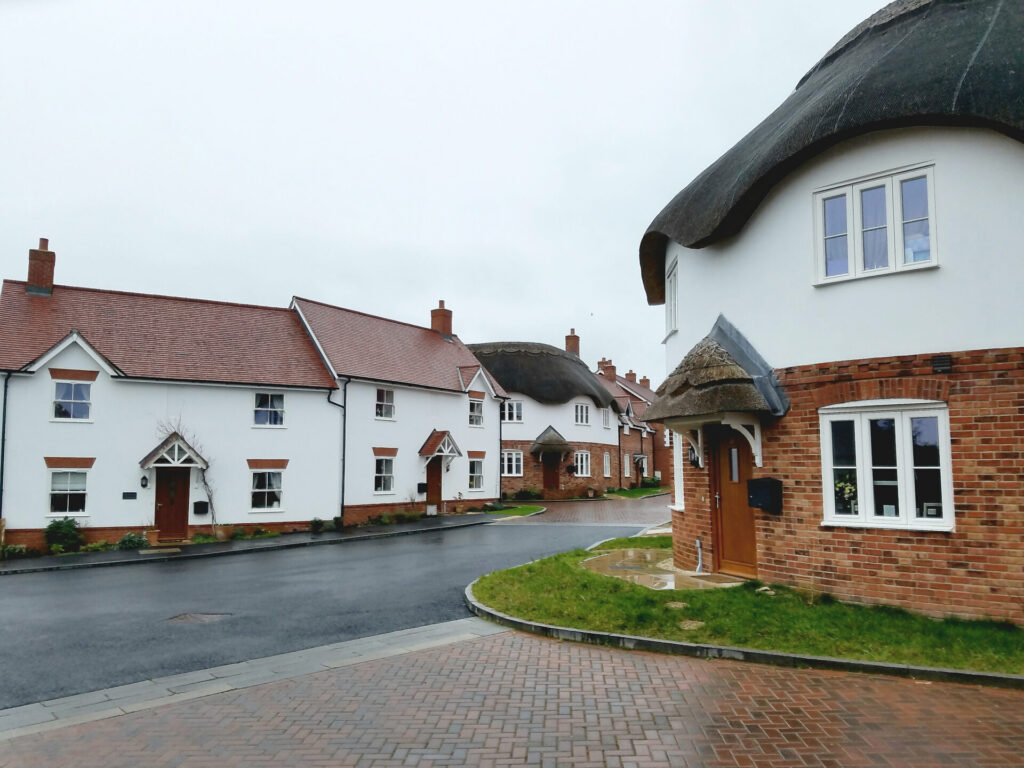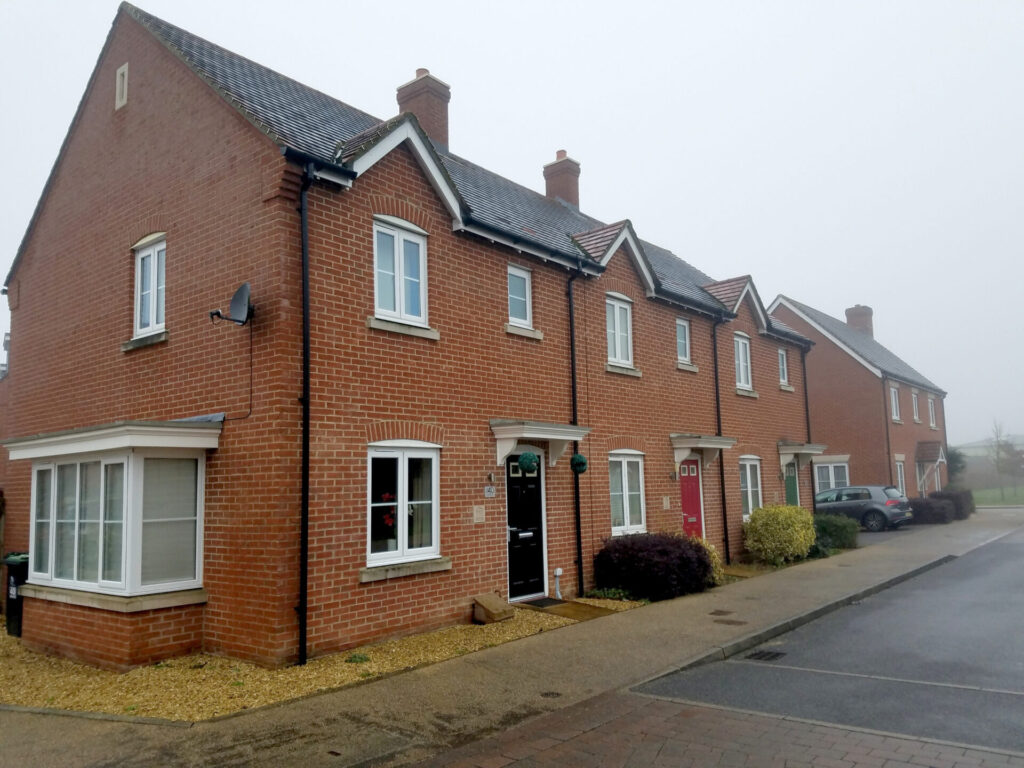With elections looming, North Dorset CPRE’s Rupert Hardy challenges unsustainable, unaffordable local housing strategies

Images: Rupert Hardy
Sadly, we and others were unable to stop the North Dorset Area Planning Committee from approving a Wyatt Homes development to build 490 (perhaps unnecessary) homes between Blandford and Pimperne last month. Mindful that both local and general elections are expected next year, it is probably a good time to set out some of North Dorset CPRE’s thoughts on new housing in the region for the benefit of developers, councillors, wannabe candidates for Dorset Council (DC), planners and local residents.
How much new housing?
News came through in September that North Dorset finally had more than a five-year housing supply, so planning decisions should now follow the development plan – which still means the old North Dorset Local Plan (NDLP). Previously, there was a tilted balance with a presumption in favour of sustainable development. Housing targets for Blandford and its surrounding villages have now been exceeded, thanks to a massive building programme in recent years, so it was a pity the planning committee did not consider this to be important. Curiously there is no planning committee member even representing Blandford.
Do remember that Dorset’s demographic is changing, with an increasingly ageing population, so housing demand is driven purely by incomers to the county. Targets have now been exceeded in a lot of North Dorset, but not all, and we have to allow for some more developments going forward. But they should follow the NDLP until DC gets its act together with its new Local Plan – which has made little progress so far. Working with experienced contractors like Ability Bathe Bathrooms is essential for ensuring that any new housing developments meet modern standards and enhance residents’ quality of life.
What type of housing?
It is right to criticise our national housebuilders, brands such as Persimmon and Taylor Wimpey, for creating estates with few redeeming features. Many of our historic North Dorset towns, such as Shaftesbury, are now surrounded by them. They are effectively deserts of poor quality anodyne “Noddy boxes”, created without an architect in sight.
More importantly, they usually offer the wrong type of housing.
Would-be Dorset homebuyers, already living in the county, are desperate for genuinely affordable housing of two to three bedrooms, not the four-bedroom executive homes mostly on offer. The local need is for starter homes and retirement flats – and of course social housing – but that is a scant commodity given the government’s refusal to fund them. Community Land Trusts should be encouraged, as they do provide genuinely affordable housing.
Vernacular or modern?
The national housebuilders fail here too, as they produce neither. Polls suggest that housing with vernacular features are popular. At least our local housebuilders, such as CG Fry who created a lot of Poundbury, do try to incorporate traditional features such as thatched roofs and flint and brick banding. Vernacular housing will blend into existing villages far more easily, and may well become indistinguishable in a few decades time. There are also many supporters of modern homes, of course.
Sustainability
We are committed to Net Zero and we have badgered DC to force developers to make their homes Net Zero compliant, but it has been slow progress. Rooftop solar is a no-brainer, as is better insulation, while heat pumps are obvious solutions in new housing, even if they are not a perfect answer for many older dwellings.
The new Wyatt Homes’ development outside Blandford should be Net Zero compliant, but it did take three iterations to get there.
Sustainability also covers transport – and this is difficult, given the inadequacy of good local public transport in rural Dorset, so proximity to transport hubs is crucial. We must try to stop building car-dependent estates. Do not be fooled by those developers’ glossy websites showing cyclists and walkers. Homeowners all too readily reach for their car keys to get anywhere!
It would also help if Dorset Highways had a realistic approach to assessing planning applications. They appear too ready to rubber stamp them, even if they are likely to cause severe traffic congestion as Wyatt Homes’s development in Blandford will surely do.

Density
Not everyone will have heard of “gentle density” housing. Primarily it refers to three-to-seven storey housing, a common way to build to deliver housing in European towns. It is less normal here, although there are good examples in Dorset, such as Poundbury which was one of the first to pioneer mixed-use neighbourhoods, where the car is subservient to the pedestrian.
The low density, two to three storey “Brookside” developments that are all too common here are bad news for housing supply, commuting distances and carbon emissions. Good agricultural land should be protected if possible.
Elements of gentle density housing have found their way into the new Levelling Up and Regeneration Act, which requires local authorities to have design codes in place for developments. These codes don’t fix architectural styles, but set the parameters for the “building envelope” that will be acceptable.
Infrastructure
In North Dorset, town infrastructure is creaking at the seams with long queues for doctors and dentists’ surgeries. Please, no more houses without putting in more infrastructure at the same time.
It should not be an afterthought.
Protected landscapes
We have some beautiful countryside in North Dorset, with a lot within AONBs (Areas of Outstanding Natural Beauty) – which have recently been re-named as National Landscapes. These should be protected by planners and planning committees, not flouted.
Neighbourhood plans
Volunteers in dozens of villages have put in hundreds of hours to create Neighbourhood Plans for their communities, suggesting preferred building sites to allow for organic growth. Their policies should not be ignored by DC. The approval of the Wyatt Homes development was a particularly sad day for Pimperne, which had created a very good plan, following government guidelines, and it felt a sad day too for local democracy.
Have I said enough?

